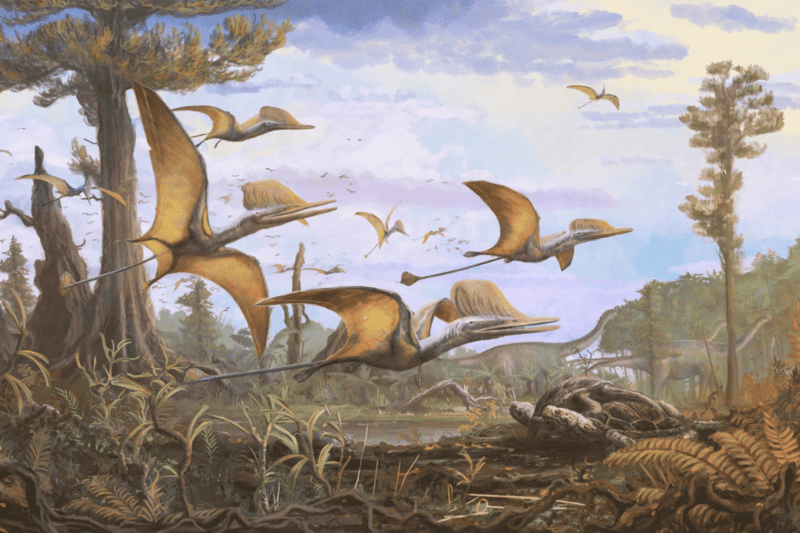In a world often overshadowed by challenges and uncertainties, it’s refreshing to pause and celebrate the positive strides made possible by science. From renewable energy breakthroughs to inspiring conservation success stories, there’s a wealth of uplifting science facts that offer a glimmer of hope for our collective future. Despite the daunting issues we face, from climate change to global health crises, it’s essential to recognize the progress being made in various scientific fields that can pave the way for a brighter tomorrow. In this article, we’ll delve into some of these heartening facts that remind us of the resilience and ingenuity of the human spirit. From advancements in clean energy to efforts in environmental conservation that restore ecosystems and protect biodiversity, these positive science facts serve as beacons of optimism in a world hungry for good news. So, join us on a journey through the realm of science, where each discovery, each breakthrough, brings us closer to a future filled with promise and possibility.

Renewable Energy has Increased by 50% Globally
In a groundbreaking stride towards a greener future, the world saw an unprecedented surge in renewable energy capacity in 2023, surpassing the growth rate of the past three decades. According to the latest report from the International Energy Agency (IEA), renewable energy capacity soared by a staggering 50%, reaching nearly 510 gigawatts (GW) globally. Solar photovoltaic (PV) installations stole the spotlight, constituting three-quarters of the total additions, with China leading the charge by commissioning as much solar PV in 2023 as the entire world did in 2022. Moreover, China’s wind power additions skyrocketed by 66% compared to the previous year, showcasing a remarkable acceleration in renewable energy adoption. This surge in renewable energy deployment aligns closely with the ambitious goal set by governments at the COP28 climate change conference to triple global capacity by 2030.
To expedite progress, the IEA stresses the need for accelerated policy implementation, strong governance, and access to finance, especially in emerging economies. Looking ahead, the report highlights promising advancements in solar PV and onshore wind deployment, alongside the potential of renewable-based hydrogen and biofuels. Additionally, the report provides insights into the burgeoning potential of renewable-based hydrogen and biofuels in decarbonizing hard-to-abate sectors. There is a pressing need for consistent policies and increased demand to accelerate deployment and align with net-zero pathways. Despite progress, consistent policies and increased demand are crucial to accelerate deployment and align with net-zero pathways for a more sustainable energy future.

Wild Beavers are Reintroduced and Protected after 400 Years
The beaver stands out among large rodents for its role as an environmental engineer, shaping landscapes and supporting biodiversity through dam construction and habitat creation. As a keystone species, beavers play a vital role in mitigating flooding, preventing soil erosion, and capturing carbon, showcasing their resilience and adaptability in the face of environmental challenges like climate change. This natural resilience and adaptability offer hope in the face of climate change and habitat degradation. Their presence reverberates through ecosystems, nurturing the growth of young salmon and providing refuge for a diverse array of creatures, from insects to mammals. This interdependence shows the connection of life forms and the potential for biodiversity conservation efforts to yield positive outcomes. Through the restoration of habitats and the promotion of species diversity, the resurgence of beaver populations offers a glimpse of a more resilient and vibrant natural world.
These industrious creatures thrive in freshwater habitats rich in woody vegetation, crafting their lodges amidst peaceful ponds and sustaining their livelihood through foraging and landscape sculpting. Once on the brink of extinction in the UK, the beaver’s triumphant return punctuates the resilience of nature. After 400 years reintroduction efforts have flourished, with populations thriving in Scotland and England. Recognized as a native species and protected under European law, beavers epitomize the restoration of balance in our ecosystems. Their successful reintroduction in regions like the UK highlights the potential for collaborative conservation efforts to restore balance in ecosystems, emphasizing the importance of protecting habitats and promoting coexistence for a sustainable future. Their presence serves as a reminder of the importance of conservation and stewardship in preserving the natural world for future generations. Through our collective actions, we can nurture hope and build a sustainable future where biodiversity thrives and ecosystems flourish.

58% of Top Medical Leaders are Optimistic about AI Healthcare
In a recent survey by MGMA Stat on January 16, 2024, medical group leaders shared insights about AI’s role in healthcare this year. The results highlighted optimism, with 58% emphasizing positive outcomes, while 30% mentioned innovation and 28% cited convenience. However, 34% expressed concerns about AI’s pace, with safety/security (18%) and hype (16%) influencing these reservations. Concerns regarding safety/security (18%) and perceived hype (16%) were cited as factors influencing this sentiment. Corey Lyons, a senior staff solution engineer for VMware, emphasized the importance of aligning new AI capabilities with existing workflows, urging medical groups to assess how these advancements integrate with established practices. Despite varying opinions, medical group practice leaders see clear opportunities to address key challenges through AI adoption. These opportunities include automating patient outreach, streamlining scheduling and front-office tasks, and reducing documentation burdens on clinicians. Ease of use emerged as a crucial factor for successful AI adoption, with respondents emphasizing the need for AI tools to seamlessly integrate into existing workflows.
The potential of AI in healthcare extends beyond administrative tasks to clinical applications. For instance, AI-powered tools can assist in detecting psychological distress among healthcare workers, identifying social determinants of health (SDoH), and improving efficiency in mental health service delivery. Yet, challenges such as safety, security, and equity remain, prompting efforts for risk management and equitable AI design. Despite hurdles, AI’s transformative potential in disease surveillance, patient care, and operational efficiency is widely acknowledged. Efforts to address these concerns include the development of AI risk management frameworks and the integration of equity considerations in AI algorithms’ design and implementation. Despite challenges, the transformative potential of AI in healthcare is widely recognized. From improving disease surveillance and predictive analytics to enhancing patient care and operational efficiency, AI promises to revolutionize healthcare delivery in the years to come.
 [Image via BBC Wildlife]
[Image via BBC Wildlife]
India’s Tiger Populations are Steadily Increasing
India’s tiger population resurgence reflects the nation’s unwavering commitment to conservation, with 3,682 individuals recorded in 2022, up from 2,967 in 2018. This positive trend over the past decade showcases significant strides in protecting this iconic species, distributed across various regions such as Madhya Pradesh, Karnataka, Uttarakhand, and Maharashtra, with a quarter thriving outside protected areas. India’s proactive approach is evident through 53 tiger reserves covering 75,796 square kilometers, crucial for tiger survival. India’s proactive approach to tiger conservation is exemplified by the establishment of 53 dedicated tiger reserves, encompassing a vast area of 75,796 square kilometers. These reserves serve as crucial habitats for tigers, providing sanctuary and protection from various threats. Notable reserves such as Corbett National Park in Uttarakhand, Bandipur, and Nagarhole in Karnataka have emerged as strongholds for tiger populations. Corbett alone reported 260 tigers, followed by Bandipur with 150 and Nagarhole with 141, underscoring the importance of these protected areas in ensuring the survival of the species.
While some regions have seen a rise in tiger numbers, others like the Western Ghats face declines, emphasizing the need for targeted conservation efforts. Scientific methods like camera trapping, capturing 88% of the estimated tiger population, aid in monitoring and planning conservation. The 2022 survey, which captured approximately 88% of the estimated tiger population on camera, demonstrates the utility of these techniques in providing valuable data for conservation planning. Sustaining growth requires ongoing habitat restoration, prey base augmentation, and anti-poaching measures, ensuring a brighter future for India’s iconic national animal through collaborative conservation initiatives. With tigers increasing at an average rate of 5% to 6% annually since 2014, India’s conservation initiatives offer hope for the continued coexistence of humans and tigers in the wild. Through collaborative efforts involving government agencies, conservation organizations, and local communities, India aims to secure a brighter future for its iconic national animal.

Scientists Find Brightest Object Ever Observed
In a groundbreaking discovery, astronomers using the European Southern Observatory’s Very Large Telescope (VLT) have unveiled an extraordinary quasar, revealing it to be the brightest and most luminous object ever detected. These quasars are luminous cores of galaxies energized by supermassive black holes, with this one standing out for its rapid growth rate, consuming mass equivalent to one Sun per day. Fueled by their resident black holes, quasars emit immense light, making them some of the most dazzling cosmic objects observable from Earth. Led by astronomer Christian Wolf from the Australian National University (ANU), the discovery of this colossal quasar, named J0529-4351. This colossal quasar, located over 12 billion light-years away, boasts a black hole with a mass equivalent to a staggering 17 billion Suns and shines with a luminosity exceeding 500 trillion times that of our own Sun.
Remarkably, J0529-4351 remained unnoticed despite being captured in images since 1980, only recognized as a quasar later due to its unprecedented luminosity. Identifying such distant and luminous objects requires advanced technologies like machine learning and instruments such as the VLT and ANU’s telescope. The discovery of J0529-4351 marks a significant milestone in our quest to understand the universe’s intricacies, with implications reaching far beyond the realm of astrophysics. As we continue to unravel the mysteries of quasars and black holes, we inch closer to unraveling the universe and uncovering the secrets of our cosmic origins. For Christian Wolf and his colleagues, the pursuit of these celestial treasures is not just a scientific endeavor but a thrilling adventure that fuels their curiosity and passion for exploring the unknown depths of space.

New Pteosaur Dinosaur Species Discovered
In a groundbreaking discovery, paleontologists have unearthed a remarkable new species of flying reptile on Scotland’s Isle of Skye, shedding light on the enigmatic world of pterosaur evolution during the Middle Jurassic period. Initially spotted as a few protruding bones in 2006 by researchers from the UK’s Natural History Museum during a field expedition, the fossil has now been identified as a previously unknown species of pterosaur, named ‘Ceoptera evansae’. Pterosaurs, colloquially known as ‘wing lizards’, roamed the skies from the Late Triassic to the mass extinction event that wiped out the dinosaurs. With a wingspan estimated at 1.6 meters, Ceoptera evansae soared above a diverse ecosystem in ancient Scotland around 165 million years ago, alongside a plethora of other prehistoric creatures including dinosaurs and marine life.
The discovery of Ceoptera adds to the growing understanding of pterosaur diversity during the Jurassic period. Previously, another pterosaur named ‘Dearc sgiathanach’ was unearthed on Skye in 2017, suggesting there’s more to the pterosaur species than previously imagined. Pterosaurs, the earliest vertebrates to achieve powered flight, remain shrouded in mystery due to the scarcity of their fossil remains. Most of what scientists know about them comes from a few exceptional fossil sites worldwide, making each new discovery invaluable. The painstaking excavation process, spanning over 18 years, features the meticulous nature of paleontological research. Embedded in a Site of Special Scientific Interest, the fossil was carefully collected and prepared, revealing a treasure trove of information about this ancient inhabitant of the skies. Named for the Scottish Gaelic word for mist, ‘ceò’, and in honor of Professor Susan Evans of University College London, Ceoptera evansae symbolizes the collaborative efforts and dedication of scientists in unraveling the mysteries of our planet’s past. With each discovery, the fog surrounding the evolution of prehistoric life grows clearer, offering glimpses into the remarkable diversity and resilience of ancient ecosystem.

Wheat Yields Have Increased 3.5-Fold
In the ever-evolving saga of humanity’s quest for sustenance, few narratives rival the awe-inspiring journey of wheat. From its humble origins as a wild grass to its status as a global staple, the story of wheat yields offers a glimmer of hope amidst the complexities of modern agriculture. In recent decades, wheat production has witnessed a remarkable resurgence, propelled by a wave of scientific breakthroughs and technological innovations. The numbers speak volumes: a breathtaking 3.5-fold increase in yields per hectare over the span of just sixty years. This meteoric rise stands as evidence to the indomitable spirit of human ingenuity and the transformative power of agricultural research. Through the lens of precision farming techniques, advanced breeding methodologies, and the widespread adoption of sustainable practices, farmers around the globe have unlocked the full potential of wheat cultivation.
With each passing season, scientists and researchers continue to push the boundaries of agricultural science, pioneering new ways to enhance crop productivity while safeguarding the environment. From drought-resistant varieties to disease-tolerant strains, the possibilities are as endless as the golden fields of wheat swaying in the breeze. As we look ahead to the horizon, the story of wheat serves as a reminder of our capacity to overcome adversity and shape a brighter tomorrow. In the fertile soil of innovation and collaboration, we plant the seeds of hope, cultivating a future where abundance and sustainability go hand in hand. So let us celebrate the triumphs of wheat, a symbol of resilience, progress, and the unwavering human spirit. In its golden grains, we find not only sustenance for the body but nourishment for the soul—a reminder that even in the face of uncertainty, the promise of tomorrow shines bright.

87% Agree, Mental Health Disorders are Becoming Less Stigmatized
In a recent survey by The Harris Poll for the APA, encouraging insights emerged on American attitudes toward mental health. The findings showed widespread acceptance and optimism.A staggering 87% of American adults expressed agreement that having a mental health disorder is not a cause for shame, with an equally impressive 86% believing in the potential for individuals with mental health disorders to improve. Dr. Arthur C. Evans Jr., CEO of the APA, lauded these results as a showcase to the ongoing efforts aimed at destigmatizing mental illness and fostering open dialogue. The survey also highlighted the correlation between familiarity and comfort levels regarding mental health, with 59% knowing someone with a mental health disorder, leading to greater compassion and support.
The survey also shed light on age-related disparities, with younger adults exhibiting higher levels of mental health stigma and shame compared to older age groups. This reinforces the importance of ongoing public education efforts, particularly among younger demographics, to combat misconceptions and promote understanding. By addressing these disparities and fostering inclusive conversations across generations, society can work towards creating a more supportive and empathetic environment for individuals of all ages. The survey findings offer a glimpse into the evolving landscape of mental health perceptions, emphasizing progress while highlighting areas for continued focus and improvement. By fostering open dialogue, promoting education, and challenging stigma, society can move closer to achieving a more supportive and inclusive environment for individuals grappling with mental health challenges. The willingness to confront stigma and embrace empathy signals a hopeful future where mental health is prioritized, and individuals feel supported in their journey towards well-being and recovery.

Over $25 Million in Private Funds Raised to Solve Kenya’s Water Problem
Ensuring access to clean water and sanitation is a fundamental goal for countries worldwide. In Kenya, this aspiration is enshrined in the national development plan, which aims to make basic water and sanitation available to all citizens by 2030. Estimates suggest that $14 billion is needed over the next 15 years to achieve universal access to safe water. To bridge this financing gap, Kenya adopted a multifaceted approach, leveraging commercial financing alongside traditional sources of funding. The World Bank Group, in collaboration with international partners, played a crucial role in scaling up the financial and operational performance of water service providers. This involved supporting creditworthiness assessments, piloting financing initiatives, and facilitating access to commercial debt.Central to these efforts was the establishment of a robust regulatory and institutional framework.
Reforms introduced through Kenya’s Water Act of 2002 aimed to improve governance and operational efficiency in the water sector. Subsequent legislation, such as the Water Act of 2016, aligned the sector with the country’s constitutional provisions and facilitated debt financing for investment. By 2018, over $25 million in private capital had been raised, with significant investments directed towards improving water infrastructure. Projects supported by the World Bank Group and its partners have already provided water access to hundreds of thousands of people, with many more expected to benefit in the coming years. Moreover, these initiatives have fostered a growing appetite for blended financing among utilities and local banks, signaling a positive shift towards sustainable water management practices. Through collaborative efforts and innovative financing mechanisms, Kenya is making significant strides towards achieving its goal of universal access to clean water and sanitation, offering hope for a healthier and more prosperous future for its citizens.

Extremely Rare Double Brood Cicada Emergence
In the forests of the eastern United States, a grand comeback is underway after two quiet years. This spring, we’re in for a unique spectacle as two separate batches of periodical cicadas emerge across much of the region. These fascinating insects, known for their 13- or 17-year life cycles, surface in a synchronized frenzy of mating and egg-laying before passing away, leaving the next generation to continue the cycle. According to John Lill, an insect ecologist at George Washington University, the simultaneous emergence of these broods in both time and space is highly unusual, generating considerable excitement among scientists and nature enthusiasts alike. Most of the cicadas we’ll witness this year belong to the Great Southern Brood, also known as Brood XIX, a 13-year cohort spanning several states. Additionally, the 17-year cicadas due this season belong to Brood XIII. Amazingly, this year’s emergence will feature all seven species of periodical cicadas found in the U.S., making it a remarkable event.
The mass emergence of cicadas serves a crucial ecological purpose, primarily as a defense mechanism against predators. Martha Weiss, an insect ecologist at Georgetown University, explains that cicadas emerge in vast numbers to satiate predators, ensuring survival through sheer numbers. Although cicadas may seem overwhelming during an emergence, they play a vital role in ecosystem dynamics. Their interactions with predators and their effects on tree growth patterns emphasize their significance in shaping forest ecosystems. Indeed, this year’s synchronized emergence is a spectacle not to be missed. It offers a unique opportunity for observation and appreciation of the natural world, leaving a lasting impression on those who witness it. Amidst the spectacle, there’s a certain magic to be found—an experience that will be remembered for years to come. This extraordinary event also gives us hope for the resilience and wonder of nature, reminding us of its capacity for renewal and adaptation despite disruptions and uncertainties.

The North American Eclipse in April 2024
The upcoming 2024 total eclipse serves as a beacon of hope, bringing people together in anticipation and wonder. In a time when divisions often seem insurmountable and challenges loom large, the anticipation and shared experience of witnessing such a cosmic marvel serve to unite people in a collective sense of wonder and awe. It is a reminder that, despite our differences and distances, we are all interconnected under the vast canopy of the universe, sharing in the beauty and mystery of its cosmic dance. What makes the 2024 eclipse particularly hopeful is its accessibility and inclusivity. With its path stretching across multiple countries and regions, it offers an opportunity for people from diverse backgrounds and walks of life to come together in celebration of a shared experience. From the bustling cities of the United States to the tranquil landscapes of Canada and Mexico, millions will have the chance to witness the celestial event.
From a scientific perspective, the 2024 eclipse holds immense significance as well. As astronomers and researchers study and observe this celestial event, they gain valuable insights into the workings of the universe, expanding our understanding of the cosmos and our place within it. It is a witness to the power of human curiosity and ingenuity, driving advancements in science and technology that have the potential to shape the course of our collective future. But perhaps most importantly, the 2024 eclipse serves as a beacon of hope for generations to come. As families gather to witness this rare celestial event, passing down the tradition from one generation to the next, it instills a sense of wonder and curiosity in young minds, igniting a passion for exploration and discovery. It is a reminder that, no matter how tumultuous the times may be, there is always beauty and wonder to be found in the world around us. In the end, the 2024 total eclipse is more than just a fleeting moment in the cosmic calendar—it is a showcase to the enduring resilience of the human spirit and a symbol of hope.

Vanished Whale Spotted for First Time in 200 Years
In a world facing environmental challenges, the recent sighting of a gray whale off Nantuckett’s coast is a beacon of hope. Scientists from the New England Aquarium (NEA) spotted the whale during an aerial survey, showcasing marine biodiversity and species adaptability. As the NEA team embarked on their survey mission, little did they anticipate the awe-inspiring spectacle that would unfold before their eyes. As they gazed upon the whale’s mottled gray and white skin and distinctive dorsal hump, a sense of wonder and excitement permeated the aircraft Amidst the vast expanse of the ocean, the majestic silhouette of the gray whale emerged, its presence an indication to the resilience and adaptability of marine life in the face of environmental change. This event, rare after two centuries, invites us to reimagine our natural world’s possibilities. The return of the gray whale to Atlantic waters reflects nature’s resilience amidst climate change, encouraging scientific exploration and conservation efforts.
The whale’s presence sparks curiosity about species migration patterns and ecological interactions. As climate change alters oceanic conditions, understanding these mechanisms becomes crucial for conservation. As climate change alters oceanic currents and temperature regimes, it creates new opportunities for species to explore and colonize new territories, reshaping the fabric of marine biodiversity in the process. By understanding the drivers of species movements and habitat utilization, scientists can inform conservation strategies and management practices aimed at protecting vulnerable species and preserving critical ecosystems. As we marvel at the enigmatic presence of the gray whale in Atlantic waters, we are reminded of the profound connection of all life on Earth and the urgent need for collective action in safeguarding our planet’s precious biodiversity. The sighting of the gray whale serves as a powerful symbol of hope, signaling the resilience, adaptability, and beauty of the natural world. It challenges us to embrace a future in which humans and nature coexist in harmony, forging a path towards a more sustainable and resilient planet for generations to come.
Where Do We Find This Stuff? Here Are Our Sources:
Renewable Energy has Increased by 50% Globally:
Wild Beaver Reintroduction and Protection after 400 Years:
58% of Top Medical Leaders are Optimistic about AI Advancements in Healthcare:
India’s Tiger Populations are Steadily Increasing:
Scientists Find Brightest Object Ever Observed:
New Pteosaur Dinosaur Species Discovered:
Wheat Yields Have Increased 3.5-Fold:
87% Agree, Mental Health Disorders are Becoming Less Stigmatized:
Over $25 Million in Private Funds Raised to Solve Kenya’s Water Problem:
Extremely Rare Double Brood Cicada Emergence:
The North American Eclipse in April 2024:
Vanished Whale Spotted for First Time in 200 Years:
